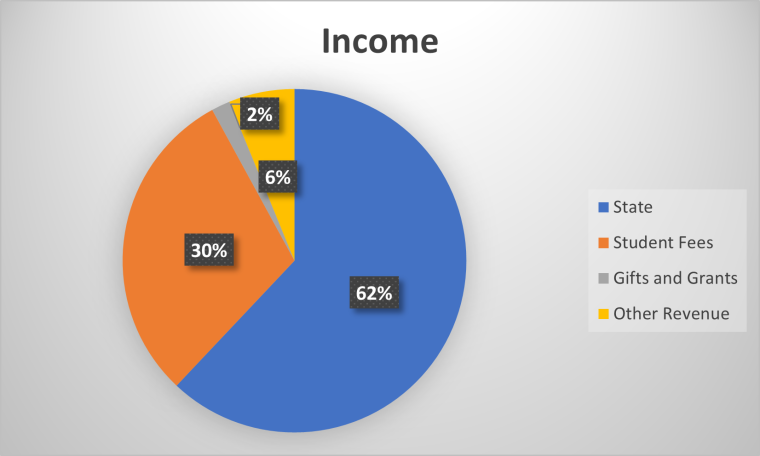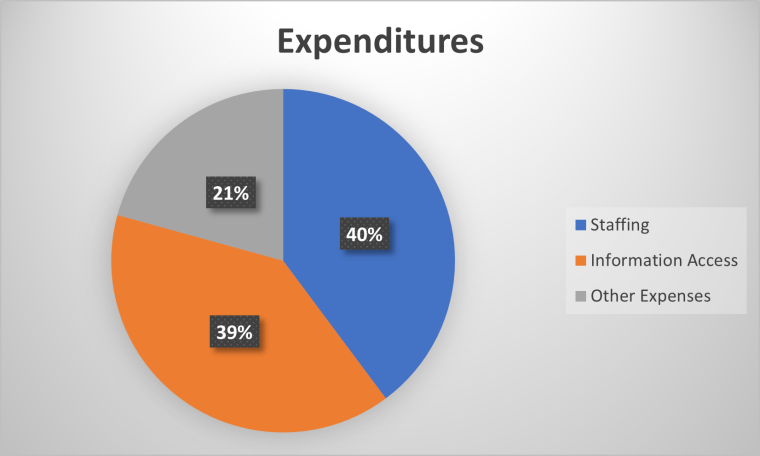The University Libraries’ primary goal is to advance the educational, research, clinical, and outreach missions of the University of Arizona. We aim to provide our students, instructors, and researchers with seamless access to the content and services they need.
Overview
The University Libraries’ total budget includes the salaries/benefits, operations, technologies, and access to information resources for the Main Library, Weaver Science-Engineering Library, Health Sciences Library, and Special Collections. The Law Library operates separately and reports to the Dean of the James E. Rogers College of Law, though Law students and faculty also have full access to all UAL content and services. The faculty and students of University of Arizona Global Campus (UAGC), however, are served exclusively by their own library.
Income
The University of Arizona is moving to Activity Informed Budgeting to allocate revenues to units. In addition, the Libraries receive a portion of the Information Technology/Library Fee.
For Fiscal Year 2023, our income looks like this:

Expenditures
For Fiscal Year 2023, our expenditures were:

As part of the University Libraries total budget, we manage the Information Access Budget (IAB) on behalf of campus. This budget is used to secure campus-wide access to information resources such as databases, journals, books/ebooks, streaming video, interlibrary loan services, and our library search tool.
Maximizing information resource dollars
To be responsible stewards of campus resources, we employ every strategy available to ensure access, contain costs, and enhance buying power.
We achieve this by engaging in intensive negotiations with vendors, leveraging consortial licensing, prioritizing access over ownership, and signing multi-year licenses. We actively manage our ongoing subscriptions, adding or removing databases or titles to meet changing needs and maximize value.
We also support open access, and actively explore new open access publishing models that can remove financial barriers and ensure free global access to scholarship. Read about UAL’s engagement in open access publishing.
Maintaining access to high-quality information resources
These decisions are informed by:
- Curricular and research priorities of campus faculty and academic units
- Data on usage and cost per use
- Users’ preferences and needs
- Our guiding principles
- Our strategic plan and the university's strategic plan
- Opportunities to return the best value to campus
Comparing peer spending
While apples-to-apples comparisons are difficult due to differences across peer institutions (size, land grant mission, with or without a medical school, etc.), the University of Arizona’s budget for information resources is significantly lower than the midpoint for our 15 peer institutions identified by the Arizona Board of Regents (ABOR). University of Arizona Libraries rank among the bottom of this group for overall expenses, and information access spending.
Reducing information resources to address annual inflation increases
In an environment of constrained budgets and ongoing annual inflationary increases, we employ an active management strategy to maintain access to the information resources most needed by campus. Without increases to account for inflation on the cost of existing subscriptions and to make room for any new resources, however, annual spending reductions, typically in the range of $500K, are necessary.
